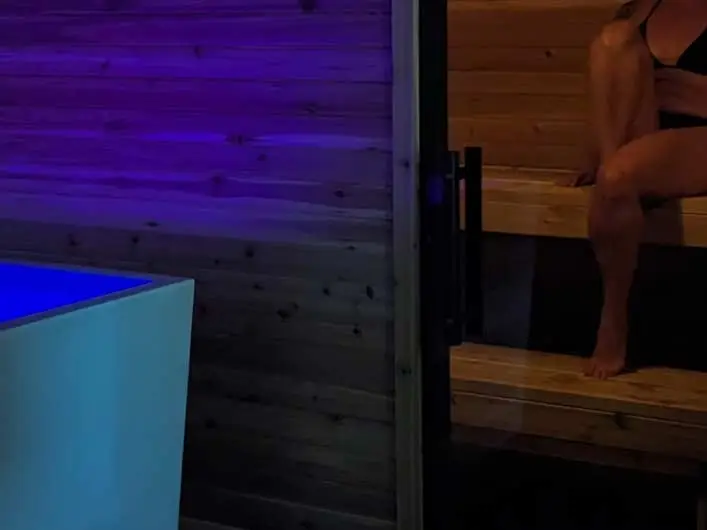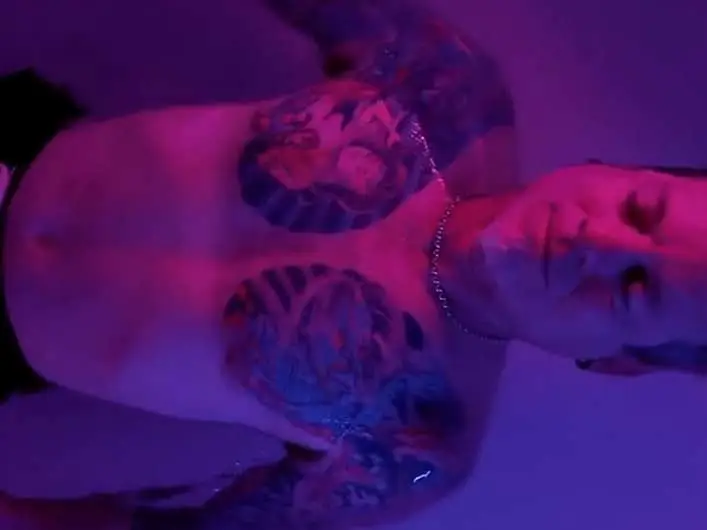In the world of recovery and performance optimization, contrast therapy stands as one of the most versatile and effective modalities available. This ancient practice—alternating between hot and cold exposure—has gained renewed scientific attention for its remarkable ability to enhance circulation, reduce inflammation, and speed healing.
At Float Forty One, we’ve integrated contrast therapy with our other science-backed modalities to provide a comprehensive approach to nervous system regulation and optimal health. But unlike some approaches that offer a one-size-fits-all protocol, contrast therapy truly shines when customized to your specific goals and needs.
This article explores the science behind contrast therapy and provides detailed protocols for tailoring this powerful modality to your unique health objectives.
The Science Behind the Switch: How Contrast Therapy Works
Contrast therapy operates on a simple but profound physiological principle: the strategic manipulation of your circulatory system through temperature changes.
When you immerse a body part in hot water (typically 100-104°F), your blood vessels dilate (vasodilation), increasing blood flow to the area. This enhanced circulation delivers oxygen and nutrients while promoting relaxation and flexibility in the tissues.
Conversely, when you switch to cold water (typically 46-50°F), your blood vessels constrict (vasoconstriction), reducing blood flow to the area. This constriction helps flush metabolic waste and reduces inflammation.
The magic happens in the alternation between these two states. This creates what researchers call a “vascular pumping effect”—a rhythmic expansion and contraction of blood vessels that dramatically enhances circulation beyond what either hot or cold therapy could achieve alone.
Recent research using near-infrared spectroscopy has confirmed that contrast therapy significantly increases tissue oxygenation and blood volume. A study published in the Journal of Athletic Training found that after a 30-minute contrast therapy protocol, participants showed measurable increases in oxygenated hemoglobin, total hemoglobin, and tissue oxygen saturation in the treated muscles.
The Foundation: A Standard Contrast Therapy Protocol
Before exploring customized approaches, let’s establish a baseline protocol that serves as the foundation for most contrast therapy applications:
- Begin with immersion in hot water (100-104°F/38-40°C) for 3-4 minutes
- Switch immediately to cold water (46-50°F/8-10°C) for 1 minute
- Return to hot water for 3-4 minutes
- Alternate between hot and cold for a total of 4-5 cycles (approximately 20-30 minutes)
- End with cold water immersion
This standard protocol provides a balanced approach that delivers many of contrast therapy’s core benefits. However, by adjusting variables like temperature, timing, and sequence, you can target specific outcomes with remarkable precision.
Protocol 1: Acute Injury Recovery
When dealing with a recent injury (within 72 hours), inflammation management becomes the primary goal. This protocol emphasizes cold exposure while still providing the circulatory benefits of contrast therapy.
Target outcomes:
Reduce inflammation, minimize swelling, manage pain
Protocol:
- Begin with cold water (50°F/10°C) for 1-2 minutes
- Switch to warm (not hot) water (95-100°F/35-38°C) for 1-2 minutes
- Return to cold water for 1-2 minutes
- Complete 5-6 cycles, always ending with cold
- Total duration: 15-20 minutes
- Frequency: 2-3 times daily for the first 48-72 hours
The science: This protocol maintains the vascular pumping effect while emphasizing cold’s anti-inflammatory properties. The shorter warm periods and lower temperatures prevent excessive blood flow to the injured area, which could exacerbate swelling, while still providing enough circulatory stimulation to remove metabolic waste and deliver healing nutrients.
Protocol 2: Chronic Pain Management
For persistent pain conditions like arthritis or tendonitis, the emphasis shifts toward the therapeutic benefits of heat while still incorporating cold’s anti-inflammatory effects.
Target outcomes:
Reduce joint stiffness, increase mobility, decrease chronic inflammation, manage pain
Protocol:
- Begin with hot water (102-104°F/39-40°C) for 4-5 minutes
- During hot immersion, gently move the affected joint through its comfortable range of motion
- Switch to cold water (50-55°F/10-13°C) for 30-60 seconds
- Return to hot water for 4-5 minutes with gentle movement
- Complete 3-4 cycles, ending with a brief cold immersion followed by a final 2-minute hot immersion
- Total duration: 20-25 minutes
- Frequency: Daily or every other day
The science: The extended heat exposure increases tissue elasticity and promotes deeper circulation to chronically inflamed tissues. The gentle movement during heat phases helps mobilize stiff joints and break up adhesions. The brief cold phases provide anti-inflammatory benefits without causing excessive stiffness, while the final heat phase ensures comfort after the session.
Protocol 3: Athletic Performance Recovery
For athletes looking to optimize recovery between training sessions, this protocol balances inflammation management with enhanced circulation to speed the removal of metabolic waste products.
Target outcomes:
Reduce delayed onset muscle soreness (DOMS), clear lactic acid, speed recovery between training sessions
Protocol:
- Begin with hot water (100-102°F/38-39°C) for 3 minutes
- Switch to cold water (46-50°F/8-10°C) for 1 minute
- Return to hot water for 3 minutes
- Complete 5 cycles, ending with cold
- Total duration: 20 minutes
- Frequency: Immediately after intense training sessions and/or 24 hours post-exercise
The science: Research has shown that contrast therapy is particularly effective at reducing lactic acid buildup and minimizing DOMS. A 2017 meta-analysis found that contrast therapy helped team sport athletes recover from fatigue 24-48 hours after competition better than passive recovery or cold water immersion alone. The balanced hot-cold ratio in this protocol optimizes circulation while providing sufficient cold exposure to manage the inflammatory response to intense exercise.
Protocol 4: Nervous System Regulation
This protocol is designed specifically to complement Float Forty One’s float therapy sessions, creating a comprehensive approach to nervous system regulation.
Target outcomes:
Balance sympathetic and parasympathetic nervous system activity, reduce stress hormones, enhance recovery from sympathetic dominance
Protocol:
- Complete a 60-minute float session
- Begin contrast therapy with 4 minutes in hot water (100-102°F/38-39°C)
- Switch to cold water (50-55°F/10-13°C) for 1 minute
- Return to hot water for 3 minutes
- Switch to cold water for 1 minute
- Finish with 2 minutes in hot water
- Total contrast therapy duration: 11 minutes
- Frequency: Following float sessions, 1-2 times weekly
The science: Float therapy induces a profound parasympathetic (rest-and-digest) state. The contrast therapy protocol gently reactivates the sympathetic system through cold exposure while maintaining the relaxation benefits of the float session. This creates a balanced autonomic nervous system response and helps “train” the nervous system to transition more effectively between sympathetic and parasympathetic states—a key factor in stress resilience and overall health.
Protocol 5: Circulation Enhancement for Extremities
For those dealing with poor circulation in the hands, feet, or lower legs, this protocol emphasizes the vascular pumping effect to enhance blood flow to peripheral tissues.
Target outcomes:
Improve circulation to extremities, reduce numbness or coldness in hands and feet, enhance nutrient delivery to peripheral tissues
Protocol:
- Begin with hot water (102-104°F/39-40°C) for 3 minutes
- Switch quickly to cold water (50-55°F/10-13°C) for 30 seconds
- Return to hot water for 3 minutes
- Complete 6-7 cycles with these shorter cold periods
- End with 3-4 minutes in hot water
- Total duration: 25-30 minutes
- Frequency: 3-4 times weekly
The science: The shorter cold periods and longer heat exposure create a more rapid vascular pumping effect while preventing the prolonged vasoconstriction that could be counterproductive for circulation-compromised extremities. The final extended heat period ensures that blood vessels remain dilated after the session, promoting continued circulation improvement.
Implementation Guidelines: Bringing Contrast Therapy Home
While Float Forty One offers professional contrast therapy as part of our comprehensive approach to health optimization, you can also implement a simplified version at home:
Equipment Needed:
- Two containers large enough to immerse the target body part
- A reliable thermometer to monitor water temperature
- Towels for drying between immersions
- A timer or clock to track immersion periods
- Additional hot water and ice to maintain temperatures throughout the session
Safety Considerations:
- Always use a thermometer to verify water temperatures
- Never use water hotter than 104°F (40°C) to avoid burns
- If you have cardiovascular disease, diabetes, Raynaud’s syndrome, or open wounds, consult your healthcare provider before beginning contrast therapy
- Stop immediately if you experience unusual pain, numbness, or skin discoloration
Practical Tips:
- For full-body contrast therapy, consider using your shower (alternating between hot and cold settings)
- For hand/foot therapy, deep sinks or buckets work well
- Prepare both containers before beginning to ensure smooth transitions
- Keep additional hot water and ice nearby to maintain temperatures
- Consider adding Epsom salts to the hot water for additional magnesium benefits
Integrating Contrast Therapy into Your Health Optimization Routine
At Float Forty One, we believe in the power of combining complementary modalities for maximum benefit. Contrast therapy works synergistically with our other offerings:
- Post-Float Contrast Therapy: After the profound relaxation of a float session, contrast therapy helps gently reactivate your system while maintaining the benefits of deep parasympathetic activation.
- Pre-Sauna Contrast Therapy: Beginning with contrast therapy before an infrared sauna session can prepare your circulatory system for the intense heat exposure, potentially enhancing detoxification and cardiovascular benefits.
- Alternating with Salt Cave Sessions: Contrast therapy’s circulatory benefits complement the respiratory and immune support of halotherapy in our salt cave.
The key to maximizing benefits is consistency. While a single contrast therapy session provides immediate physiological effects, the most profound improvements come from regular practice tailored to your specific needs.
The Path Forward: Personalized Protocols at Float Forty One
At Float Forty One, we recognize that each person’s body, goals, and preferences are unique. Our approach to contrast therapy reflects this understanding, with personalized protocols developed in consultation with our experienced team.
Whether you’re an athlete looking to enhance recovery, someone managing chronic pain, or simply seeking to optimize your health through improved circulation and nervous system regulation, contrast therapy offers a powerful, customizable tool in your health optimization toolkit.
Ready to experience the benefits of professionally guided contrast therapy? Our team at Float Forty One is prepared to develop a protocol specifically tailored to your needs and goals.
Schedule Your Contrast Therapy Session
Find Quiet. Find Serenity. Find Freedom.




